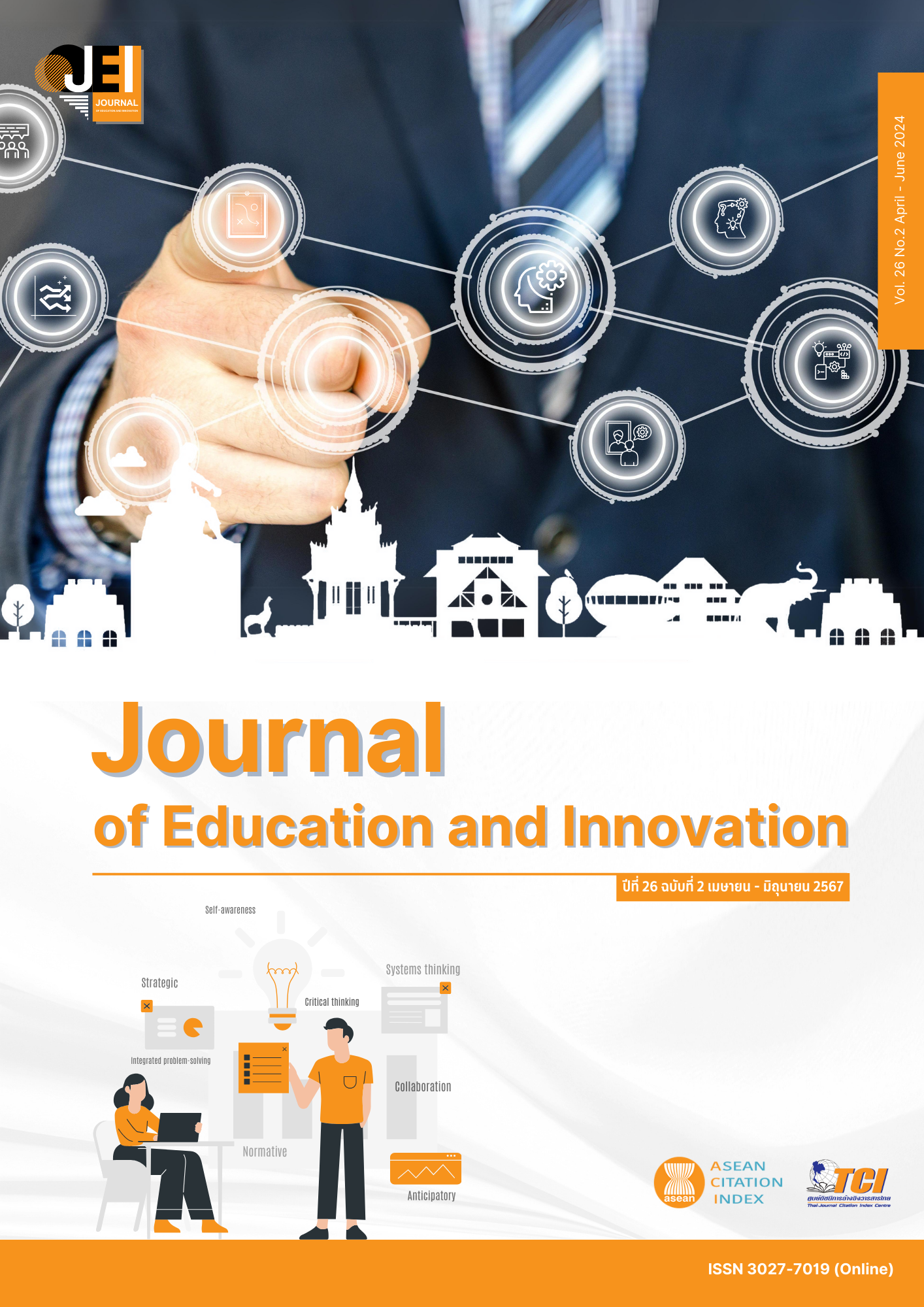THE DEVELOPMENT OF EMERGENCY FALL DOWN APPLICATION IN ELDERS: A MODEL FOR LEARNING APPLICATION DESIGN
Main Article Content
Abstract
The framework of teaching and learning in the 21st century focuses on providing students with innovative and technology skills. Developing fundamental knowledge in these areas necessitates the use of contemporary technology for learners to study and improve for practical application. This study aims to 1) study the accuracy test model, which will be utilized as an example in the development of an emergency a wristband system for the elderly who fall, 2) create a computer science application, such as an emergency alert a wristband system for seniors who fall, 3) develop a prototype of an application for a wristband system for use in the analysis and design for information systems class, and 4) assess learners' satisfaction following laboratory testing of the emergency wristband system. The results showed that the students learnt how to use the fusion matrix to estimate the system's prediction accuracy at 86%. Students are aware that the appearance and equipment were designed with real users in mind. The outcomes of learning attainment after learning to design and construct apps at a very excellent level ( = 4.6) and student and user satisfaction assessment results after using the application. Job satisfaction was satisfactory (
= 4.3).
Article Details

This work is licensed under a Creative Commons Attribution-NonCommercial-NoDerivatives 4.0 International License.
The owner of the article does not copy or violate any of its copyright. If any copyright infringement occurs or prosecution, in any case, the Editorial Board is not involved in all the rights to the owner of the article to be performed.
References
Apple. (2023). Use fall detection with Apple Watch. Retrieved 25 January 2023, from https://support.apple.com
Chotikawannich, T. (2012). An embedded system for fall detection while showering by a privacy camera. Electrical Engineering Program, Faculty of Engineering (Master thesis). Songkla: Prince of Songkla University.
Christen, P., & Goiser, K. (2007). Quality and Complexity Measures for Data Linkage and Deduplication. In F. Guillet & H. J. Hamilton (ed.), Quality Measures in Data Mining, Vol. 43 (pp. 127-151). Springer.
Citrohn, B., Stolpe, K., & Svensson, M. (2023). The use of models and modelling in design projects in three different technology classrooms. Int J Technol Des Educ, 33, 63–90. https://doi.org/10.1007/s10798-022-09730-9
Eady, M., & Lockyer, L. (2013). Tools for learning: technology and teaching strategies. In P. Hudson (Ed.), Learning to teach in the primary school (pp. 71-89). Cambridge University Press (CUP).
Greenhill, V. (2010). 21st Century Knowledge and Skills in Educator Preparation. Partnership for 21st century skills.
Genç İlter, B. (2015). How does technology affect language learning process at an early age? Procedia Social and Behavioral Sciences, 199, 311-316.
Kamtab, P., & Wiriyanon, T. (2022). Design a Digital Multimodal User Interface for Senior Citizens. Journal of Education Studies, 50(1). DOI: 10.14456/educu.2022.5
Kangjannopong, J., & Puttha, K. (2013). Fall detection system using 3-Axis accelerometer sensor with FiO std board (Master thesis). Nakhon Ratchasima: Suranaree University of Technology.
Kangwanvinitkul, K., Bungkon, K., Ladkaeo, N., & Kongjeran, N. (2019). Elderly Tracking and Alert System using Wi-Fi Network. Journal of Engineering and Digital Technology (JEDT), 7(1), 15-21.
Larsen-Freeman, D., & Anderson, M. (2013). Techniques and principles in language teaching (3rd ed.). Oxford: Oxford University Press.
Nadee, T. (2022). An application for the Android operating system on selecting a specific diet. Industrial Technology Journal Surindra Rajabhat University, 7(1), 66-80.
Pasilaetesang, B. (2021). Creating AI Learning with Python Machine Learning. Bangkok: Se-ed Company.
Pravatbrisut, A. (2021). Python for data science, data visualization, and machine learning. Bangkok: Promotion Company.
Rauscher, W. (2010). Knowledge-generating activities on which technology education students draw when they design and make artefacts. African Journal of Research in Mathematics, Science and Technology Education, 14(1), 85-98. https://doi.org/10.1080/10288457.2010.10740675
Salavati, S. (2016). Use of Digital Technologies in Education: The Complexity of Teachers' Everyday Practice. Linnaeus University Press.
Sarabun, K. (2020). Learning Data Science and AI: Machine Learning with Python. Bangkok: Media Network.
Sompang, P., & Jaruvitayakul, T. (2015). 2D Fall Detection System using Bluetooth Accelerometer Sensor. Paper presented at the The 9th National Conference on Information Technology (NCIT), Bangkok.
Sommerville, I. (2011). Software Engineering, 9/E. Pearson Education India.
Srisaad, W., Chatrawarawut, N., Chotpant, S., & Jamnongsi, P. (2019). Smart steps. Walailak Procedia, 2019(7), NCIs35-NCIs35.
Wongpaiboon, P. (2017).). Active Learning and Student Involvement. Journal of Yanasangvorn Research Institute Mahamakut Buddhist University, 8(2), 327-336.
Vititsitti, C. (2020). Fall detection for the elderly and data classification activity using weighted k-Nearest neighbor algorithm on IoT-based Portable Embedded System. Journal of Engineering, RMUTT, 18(1), 45-56.
Yamane, T. (1973). Statistics: An introductory statistic (2nd ed.). New York: Harper & Row.


